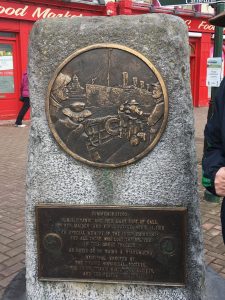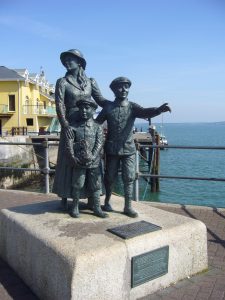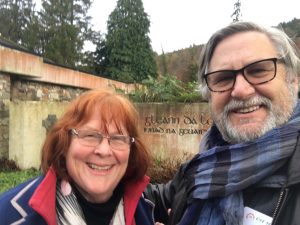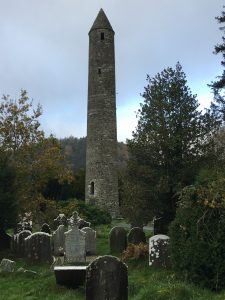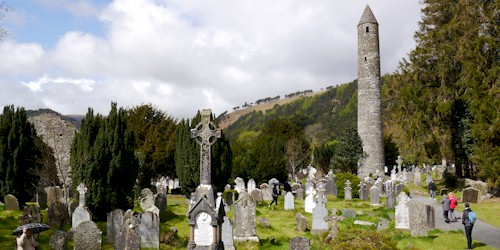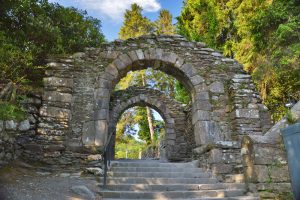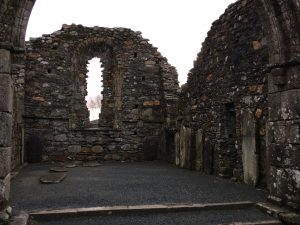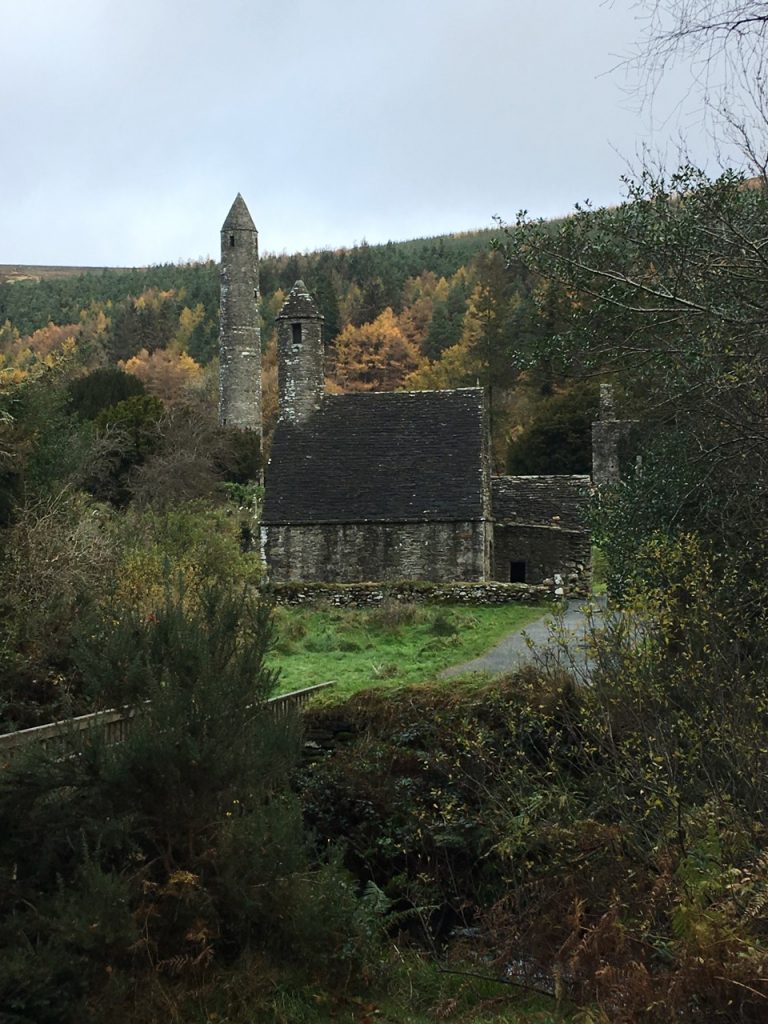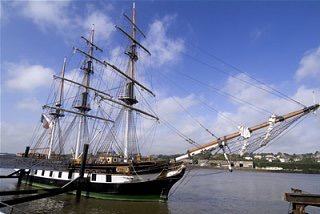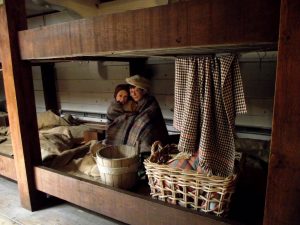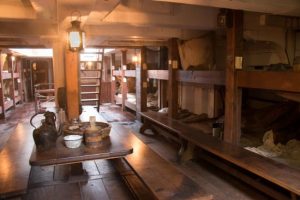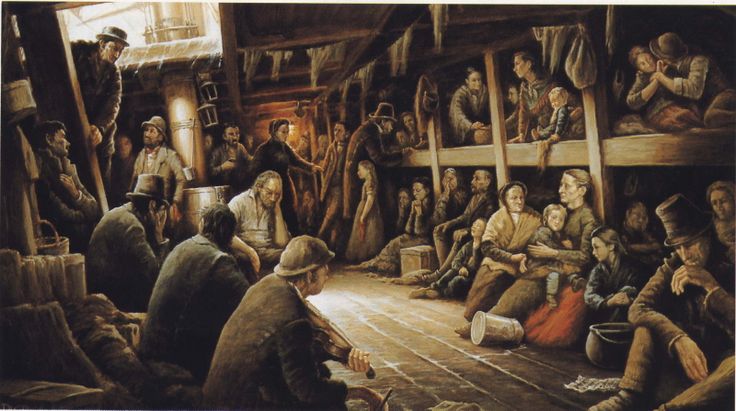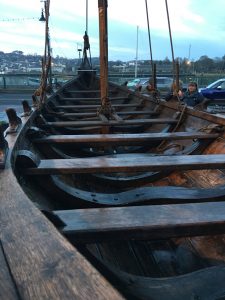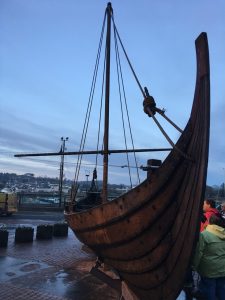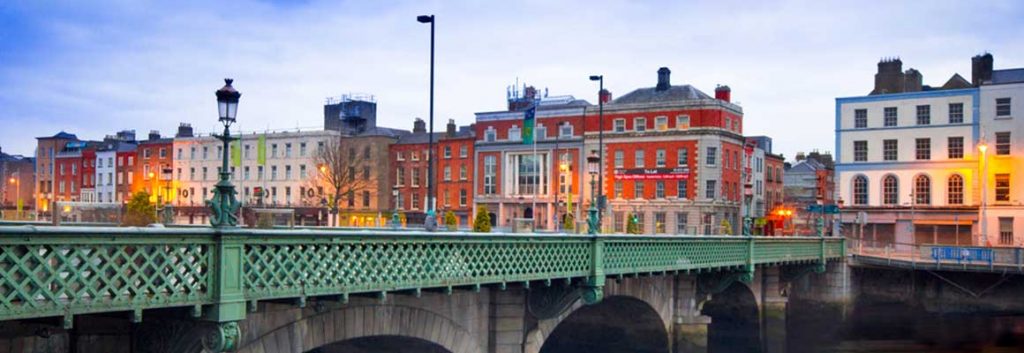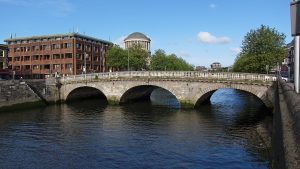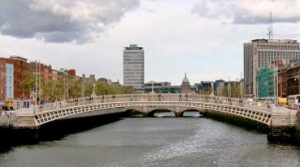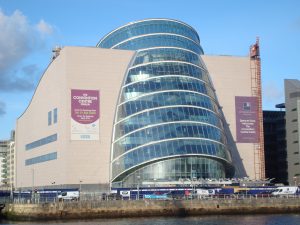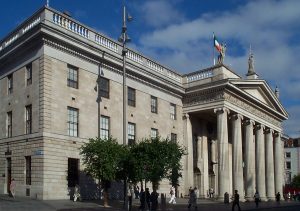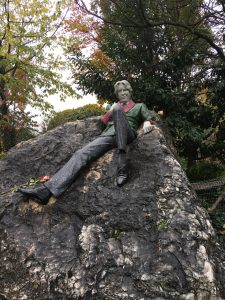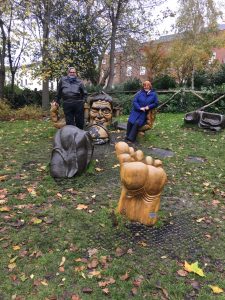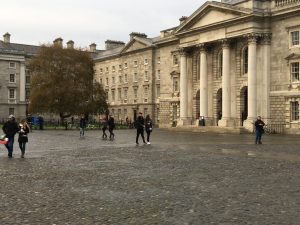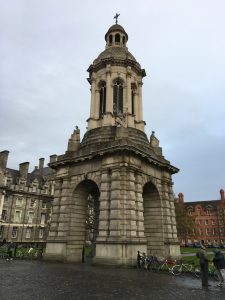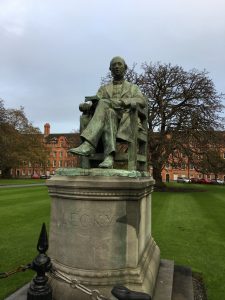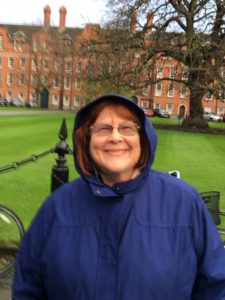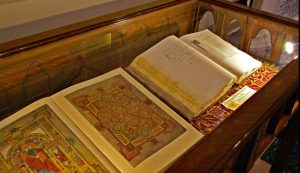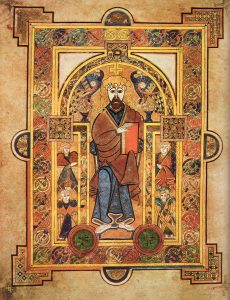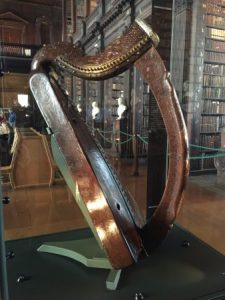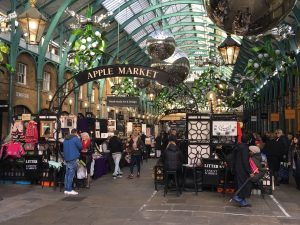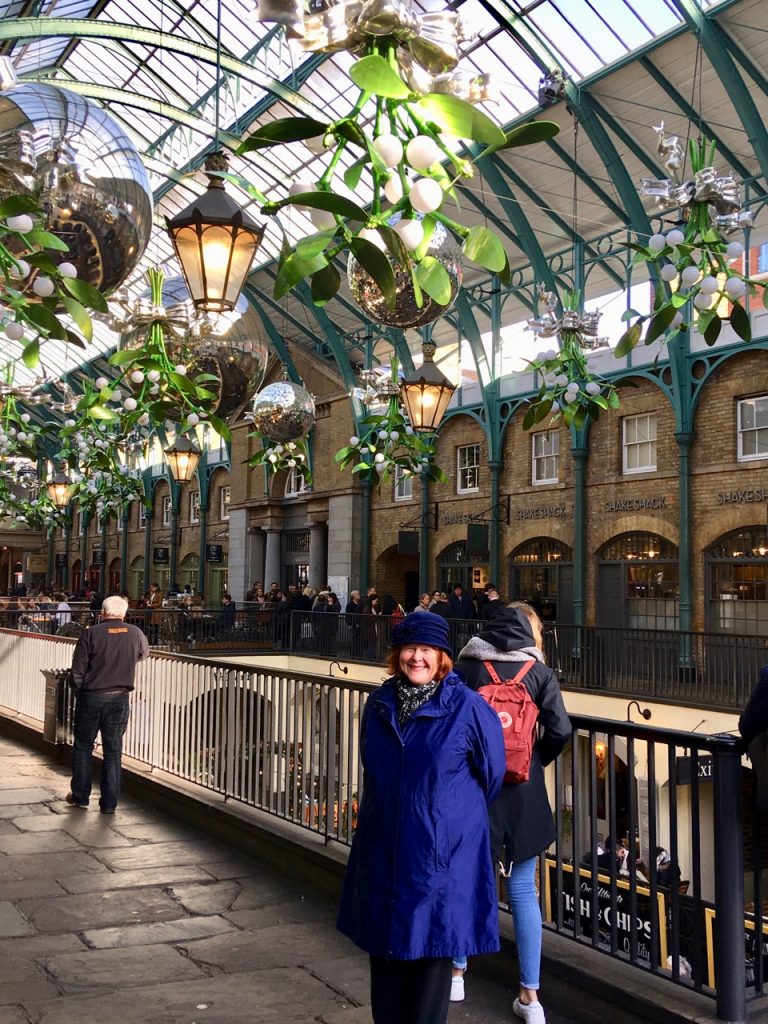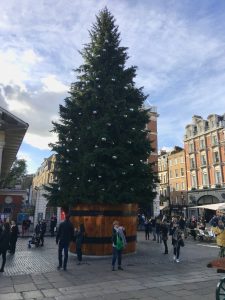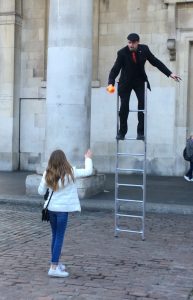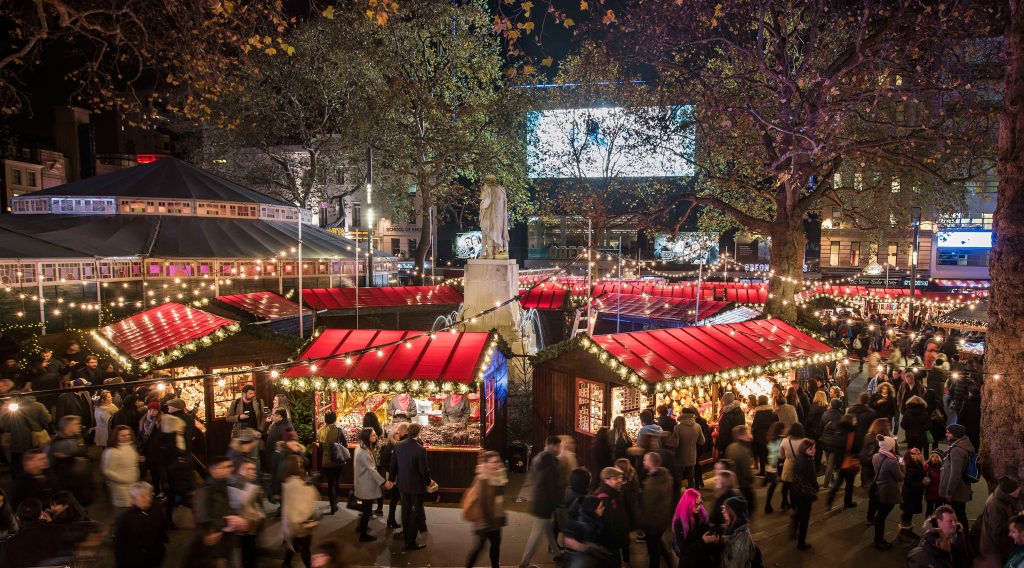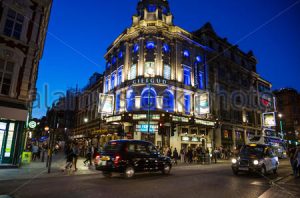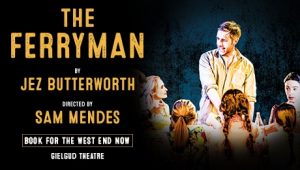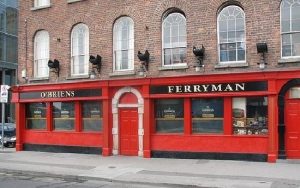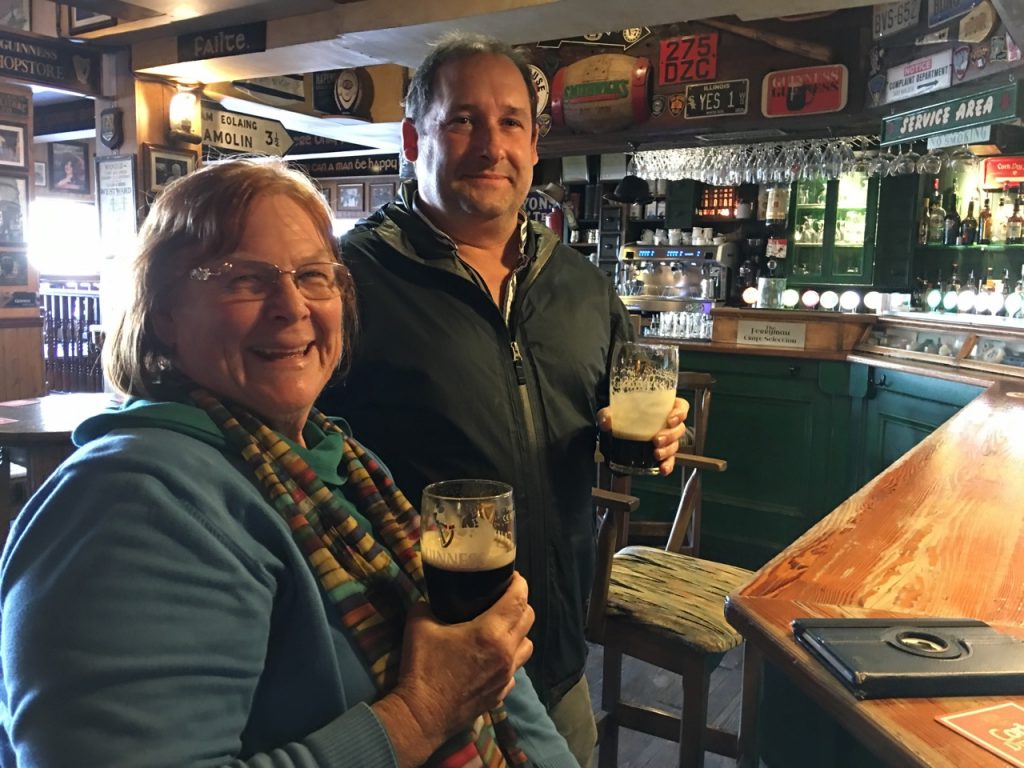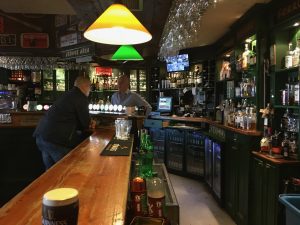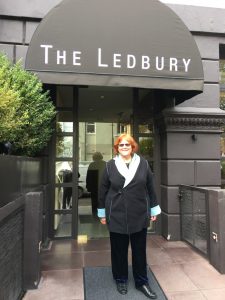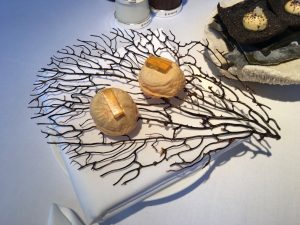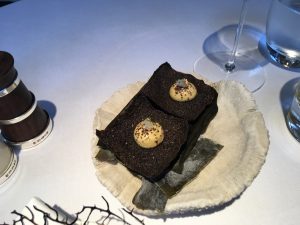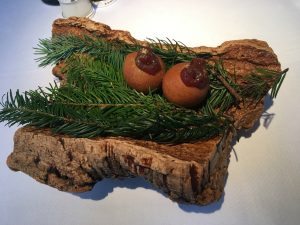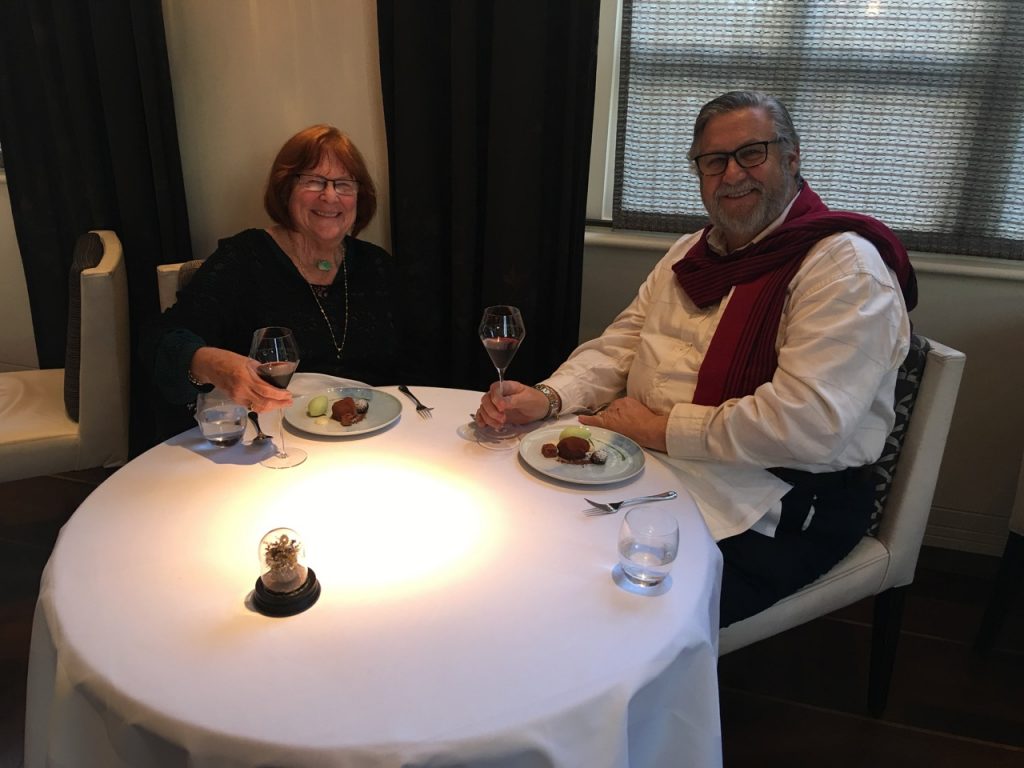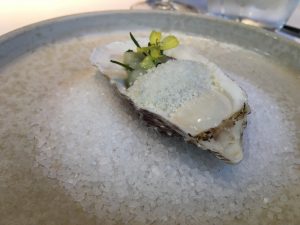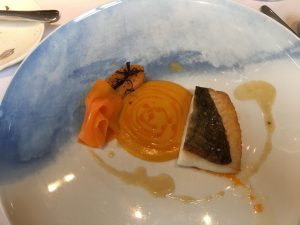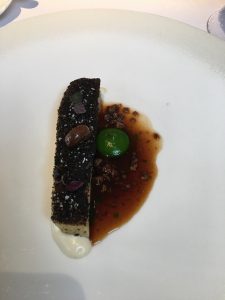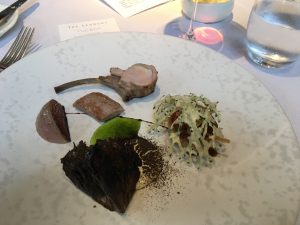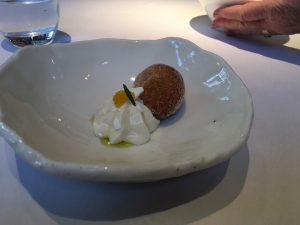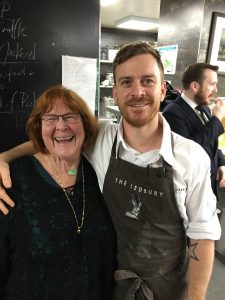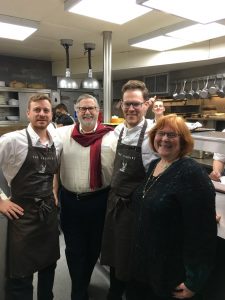First thing on Wednesday we hopped on the bus for a 3-minute trip to the Waterford Glass Factory. Waterford – bring to mind exquisite glassware for sure and our tour re-enforced that notion. Our guide, Mike, has worked for the Waterford Company since the 1970’s and clearly had a grasp of the process of the system. While most of the Waterford glass was manufactured in the late Slovakia, it would seem the more decorative or limited edition pieces are done in the Waterford plant.
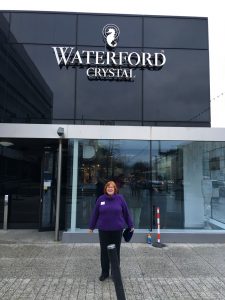
Starting with a brief video highlighting the history of the company – started in 1783 closed in 1890 and restarted around 1947 it was an interesting presentation and gave a good understanding of the historical position of the company.
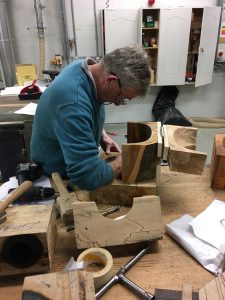
When making limited edition pieces, they start off with a wood model and from that make a wooden mold in which the glass is blown.
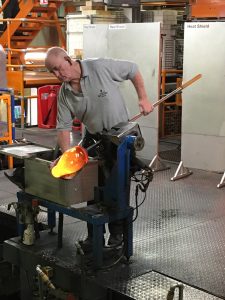
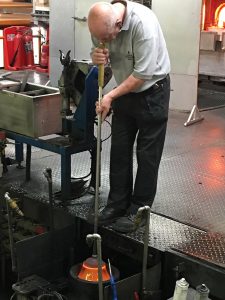

Once a design is determined to be acceptable more permanent metal molds are made. Our first stop was the model shop where we watched a woodworker make the finishing touches on a mold. From the model workshop, we moved on to the glass blowing station – with two stations heating and blowing individual pieces. While we were there they were making a limited edition Saint Patrick’s Day Bowl for sale to the US Market in February.
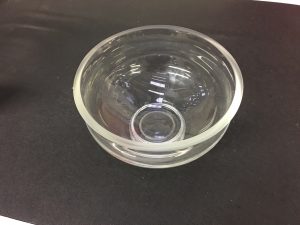
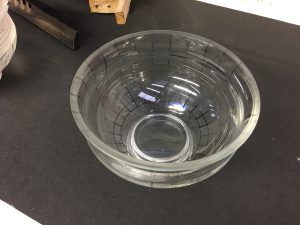
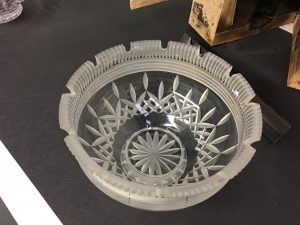
After the glass bowl has been ‘blown’ and cured overnight it moves to the first to the marking station, where all the design is drawn onto the bowl and then to the engraving stations.
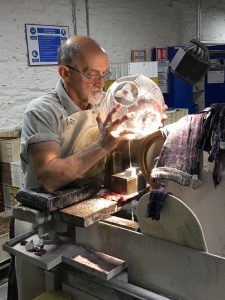
Each bowl is hand engraved using diamond wheels and water. The training for the engraving station takes 5 to 7 years before the individual is truly fully trained and allowed to engrave the materials. It was interesting to watch these workers (99% men by the way) perform their tasks. Etching is done at the last station by artists with hand tools, both male and female.
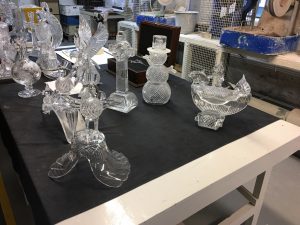
From the production end of the building we of course went into the sales area where we were able to purchase a wide selection of Waterford products. Most tableware is now made in Slovakia. Needless to say, we didn’t purchase anything ,but it was interesting to see the wide range of items available.
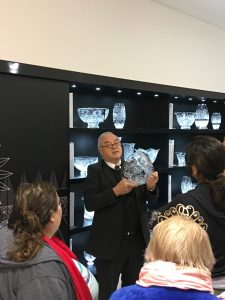

After our tour we got back on the bus and headed towards Blarney Castle. There was a photo stop along the way to see the coastline – Atlantic Ocean and village of Dungarvan.
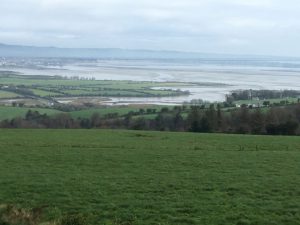
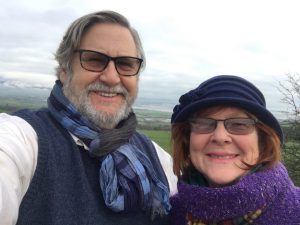
The countryside is GREEN with limited farming beyond sheep grazing the grass. The overcast sky’s and damp weather make it very clear we are Ireland.
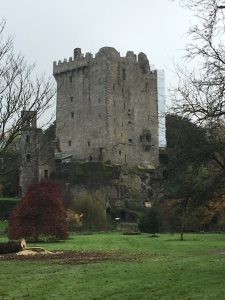
Blarney Castle – what can I say about this place. Blarney castle is the third structure to have been erected on the site. In the 10th century there was wooden hunting lodge here, around 1210 this was replaced by a stone structure. This was all demolished and the foundations used to create the current castle built by Dermot MacCarthy in 1446.
Why do people go to kiss the Blarney stone? Well, legend indicates it all started when Cormac Teige McCarthy, the Lord of Blarney, was called to Queen Elizabeth to explain his lack of payments to the Crown. McCarthy met an old witch woman on the way who told him that anyone who kissed a particular stone she indicated would be given the gift of eloquent speech. So he kissed the stone and went on to the Queen and was so eloquent in his speech he was completely successful and returned a tax free happy man.
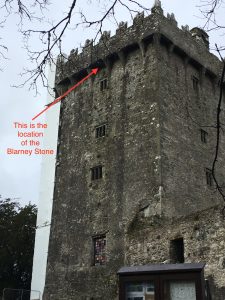
He subsequently had the stone placed in the upper tower of the Castle. From then on, the legend grew to such an extent that for over 200 years world statesmen( W.Churchill), literary giants and millions of ordinary folk have climbed the steps to kiss the Blarney stone and gain the gift of eloquence.
After getting off the bus we headed to the Castle and up the stairs. There are over 500 steps – not all in great shape and in a circular tower to get to the top. On top of all of that, it was misty and the steps were wet with dew. However, we made it to the top and proceeded to Kiss the Stone. Fortunately, there are a couple of guys there to help with the process along with grab bars and a mat to lay on to perform the ritual. Of course, you do it on your back, have to slide over the edge and while hanging UPSIDE DOWN slide down to kiss the stone.
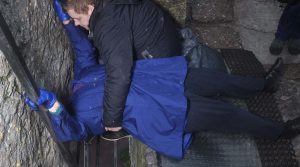

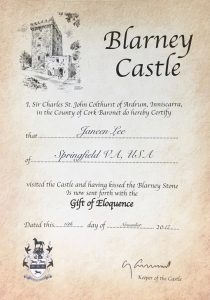

After getting back down the tower steps, we walked over for lunch at the pub and Blarney Woolen Mills purchase of a vest for David, and then back to our bus for the drive to Cobh. This village’s major claim to fame is that the Titanic made the last port of call prior to setting sail across the Atlantic to her meeting with the iceberg. The other major event, for the village, was the sinking of the Cunard Liner the Lusitania on May 7th 1915 resulted in the deaths of 1,198 of the 1,9659 people on board. It was torpedoed off the coast and many of the boating people of Cobh went out and rescued survivors and brought back the dead.
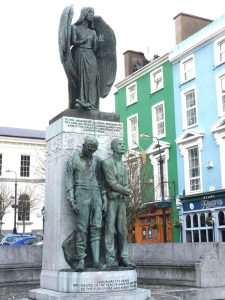
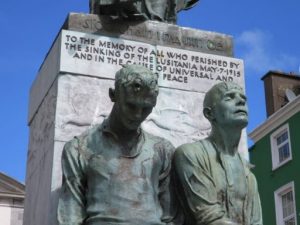
The village has two memorials – one large one for the Lusitania and a smaller one for the Titanic. We also learned about the local history of the village, people who had visited and more answers to Ireland in WWII. Once our guide had shared his wisdom, we boarded the bus for our final drive to Killarney.
